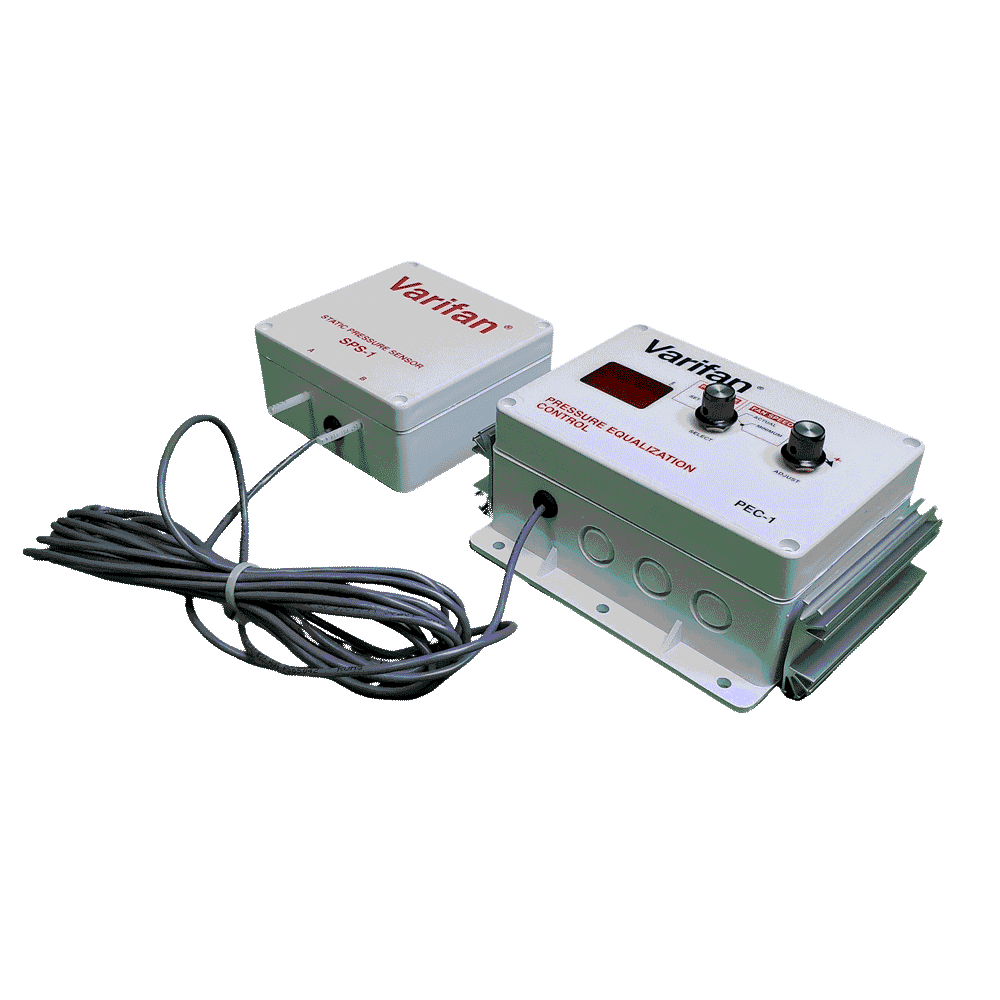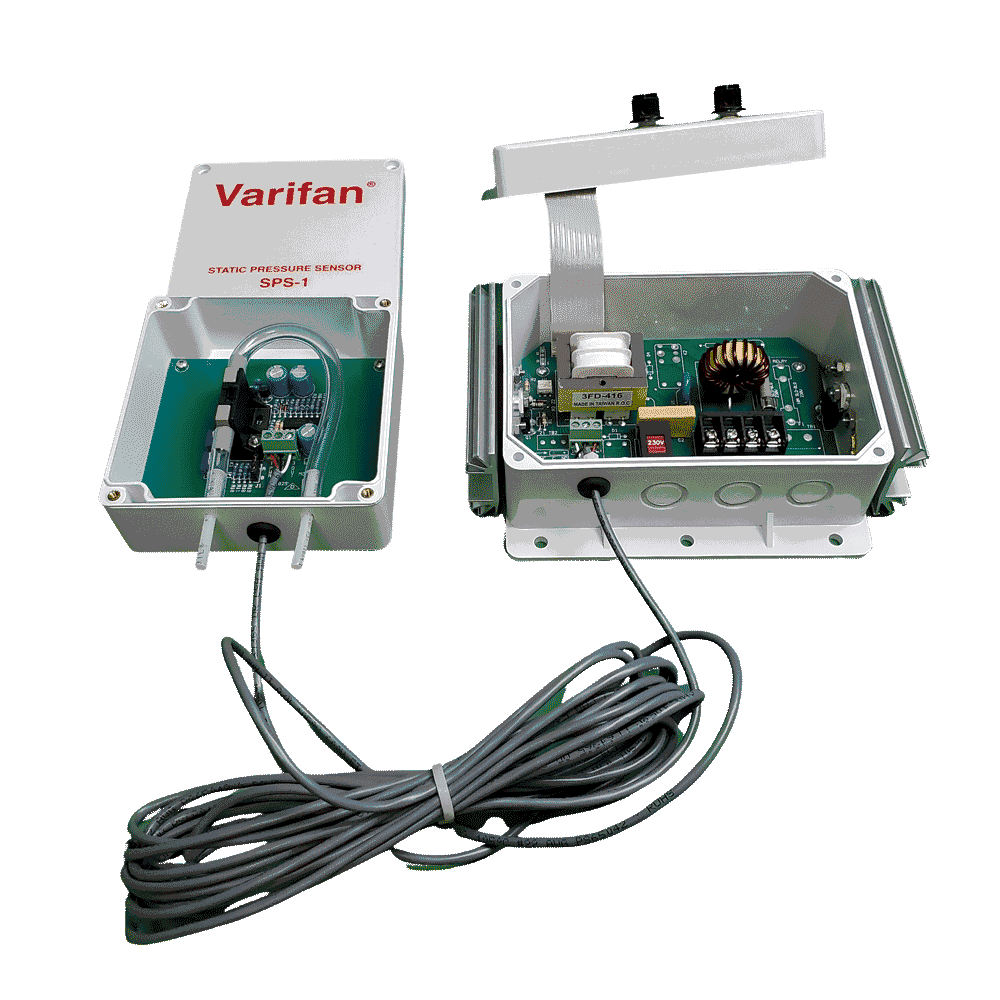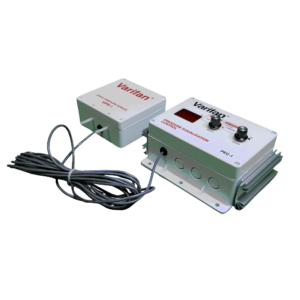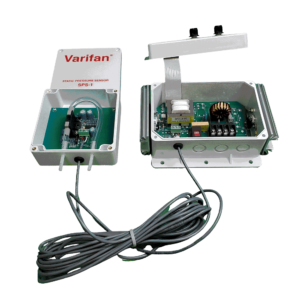Maintains static pressure at 0 or set value by changing fan speed
Digital static pressure display
Remote solid-state pressure transmitter
Adjustable minimum fan speed
Selectable control sensitivity
Can be use in exhaust or intake mode
No calibration required
INSTALLATION INSTRUCTIONS
- The SPS-1 static pressure sensor can be installed up to 500 feet from the PEC-1 control unit.
- A three-wire cable of 22 AWG conductors is used to connect the transmitter to the control unit.
- The transmitter box can be located on either an inside wall or an outside wall, or even the ceiling if necessary.
- If the transmitter is mounted outside, it must be in a protected location so that wind and weather does not disturb the air inlet to the transmitter.
- If the transmitter is mounted on the inside of the building, the flexible vinyl tube that would be connected to the exterior probe inlet must also be in a protected location on the outside of the building.




